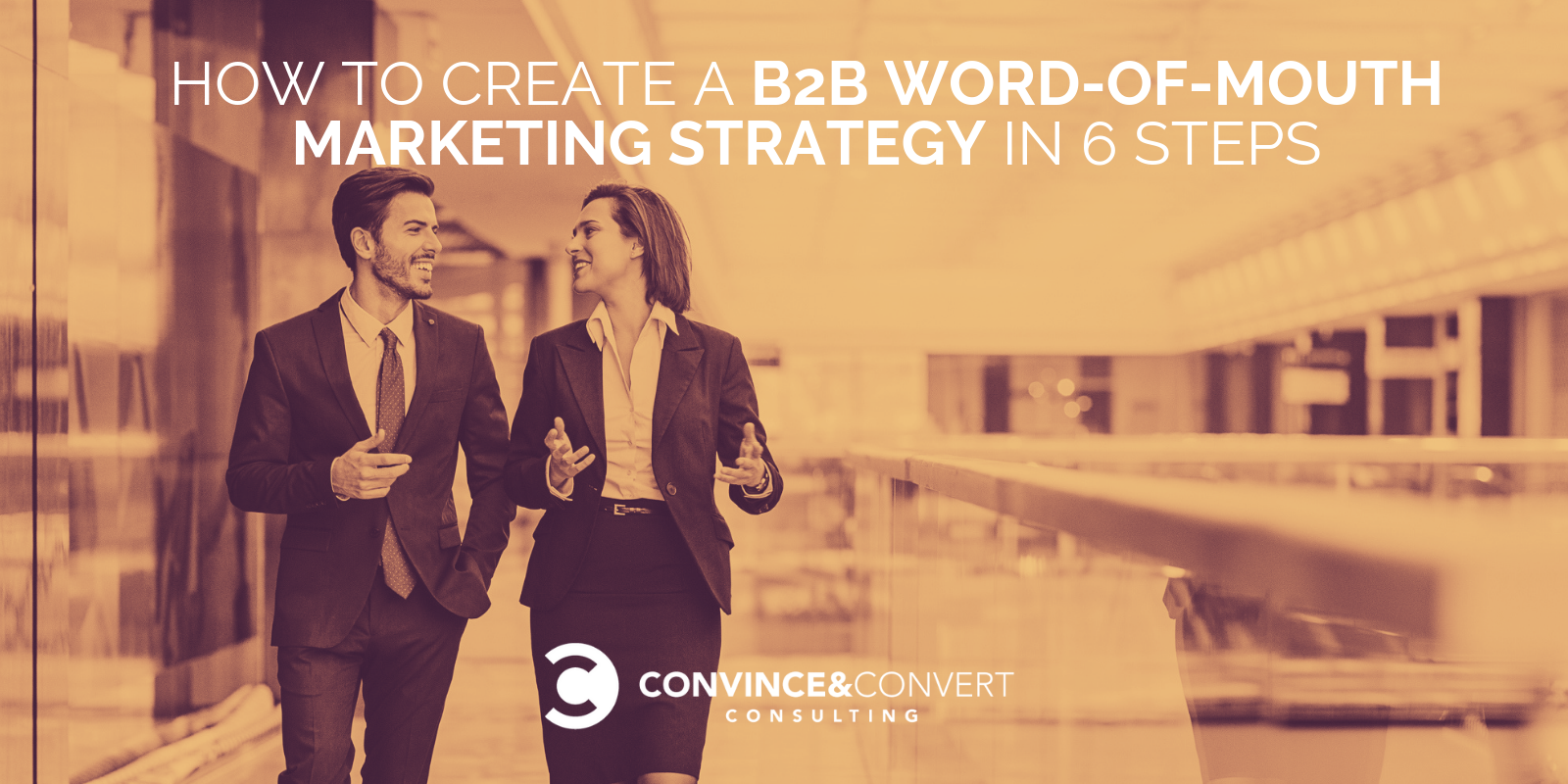
Word of mouth influences more than 90% of B2B purchases. Yet, almost every B2B company takes it for granted. They just assume that customers will talk about the business. But that’s not how people really behave, is it?
Word of mouth influences more than 90% of #B2B purchases.
Click To Tweet
We discuss things that we don’t expect and ignore things we do expect.
From a word-of-mouth perspective, B2B companies almost reflexively make the same mistake: thinking that competency creates conversation. Being a “good” company might keep your customers happy, but it gives those customers no raw materials with which to tell your story.
This is why B2B companies need a defined word-of-mouth strategy: a noticeable, operational differentiator that compels conversation.
The Case for B2B Word-of-Mouth Marketing Strategy
My colleague Daniel Lemin and I detail how to create and implement a word-of-mouth strategy in our book, Talk Triggers. We also go into far greater detail in our brand-new online training course: The Word of Mouth Marketing Master Class, which launches February 1 (just a few spots remaining, if you’re interested).
But in case you don’t want to read a whole book (but you should, we have a money-back guarantee on the book), here is a summary of the six-step process for creating a word of mouth strategy.
Note that this is essentially the same strategy we use here at Convince & Convert when we create word of mouth strategic plans for our clients. If you’re interested in that type of service, take a look at our word of mouth consulting program.
But first, let me tell you the unequivocally WORST way to create a B2B word of mouth strategy: to sit in a conference room and brainstorm an idea. If it was that easy, you’d have already done it.
The worst way to create a #B2B word of mouth strategy is to sit in a conference room and brainstorm an idea.
Click To Tweet
I’ve been working on word-of-mouth strategy and the talk triggers concept for eight years, and I can tell you that this strategic planning process is not only worth the time and effort, it dramatically curtails the likelihood that your word of mouth program will fail.
Here’s our 6-step process for creating a B2B word of mouth marketing strategy:
Step 1: Map Your Customer Journey(s)
Document every touchpoint you have with customers, throughout the sales cycle and beyond (post-sale). If you have different customer types whose customer journey with you varies based on their region, product/service purchased, or some other factor, document that as well.
Step 2: Interview Your Customers
This could be the most important step in the word-of-mouth strategy process. You simply MUST have customer input, because you might think you know what’s talkable, but you are NOT your customer.
I want you to interview 15 customers. Phone is best. Email survey is possible. The 15 customers should be divided into three groups: new customers, long-time customers and lost customers. The lost customer groups could be defectors or just people that got deep in the sales funnel and then didn’t convert.
During each interview you want to review the key components of the customer journey and ask each interview subject “at this stage of the process with our company, what did you EXPECT would happen?” What you’re seeking in step 2 is to overlay customer expectations on top of your customer journey map.
This is critical because human beings are wired to talk about what they do not expect. Thus, your ultimate word-of-mouth strategy must fall into that category

Step 3: Create Candidate Talk Triggers
Now that you know what customers expect, create between five and eight ideas for talk triggers.
A talk trigger is a strategic, operational differentiator that compels conversation. It must be repeatable, meaning every customer has access to it. The hilarious on-hold music that Uberconference uses is a good B2B talk Ttrigger.
There are five types of talk triggers: talkable generosity, talkable usefulness, talkable speed, talkable empathy and talkable attitude. Your talk trigger ideas must fit into one of these five. Ideally, your candidate triggers should come from 2-3 of these buckets.
Step 4: Test Your Trigger
Decide on a talk trigger that your research indicates will be talkable and operationally viable for you to implement.
Take one portion of your customer base that you can segment and partition (a particular product, region, et al) and introduce your talk trigger ONLY to that segment. Do this until you have approximately 100 customers that have fully experienced your candidate trigger.
Step 5: Measure Your Trigger
In some cases, if customers sufficiently notice and talk about your operational differentiator, you’ll see the evidence right away. It will show up in social media (although that’s more often true for B2C companies). Or they’ll mention it to your sales or customer success team.
The best way to gauge the impact of your talk trigger is to survey the ~100 customers who have experienced it. Create a three-question survey (email is fine for this) and ask these questions:
- In the last 30 days, have you told anyone about our company?
- What did you say?
- Did you mention any of these things? (present a list of six attributes, one of which is your Talk Trigger)
If your three-question survey shows that 15%+ of your customers mention the talk trigger in question 2, and/or 25%+ of your customers select the Talk Trigger in question 3, your differentiator is talkable enough for expansion.
Step 6: Operationalize Your Talk Trigger
If your talk trigger meets the talkability threshold in step 5, roll it out to all customers, in all circumstances. If it fails step 5, go back to your list of candidate triggers and pick a new one to test, repeating steps 4 and 5, as needed.
There you have it. The abbreviated, 6-step process for creating a winning B2B word of mouth strategy. Of course, the key is to come up with interesting talk triggers ideas that customers will genuinely not expect and subsequently talk about. If you can do that, you turn your customers into volunteer marketers, which is the best way to grow any B2B company.
A lot more information (including dozens of examples and case studies) in the book. And if you’d like to work closely with Daniel Lemin and me on crafting your own Talk Trigger, consider our new Word of Mouth Marketing Master Class. It debuts February 1, and pricing goes up January 1.
The post How to Create a B2B Word-of-Mouth Marketing Strategy in 6 Steps appeared first on Convince and Convert: Social Media Consulting and Content Marketing Consulting.
from Convince and Convert: Social Media Consulting and Content Marketing Consulting https://ift.tt/2rMlapI



No comments:
Post a Comment